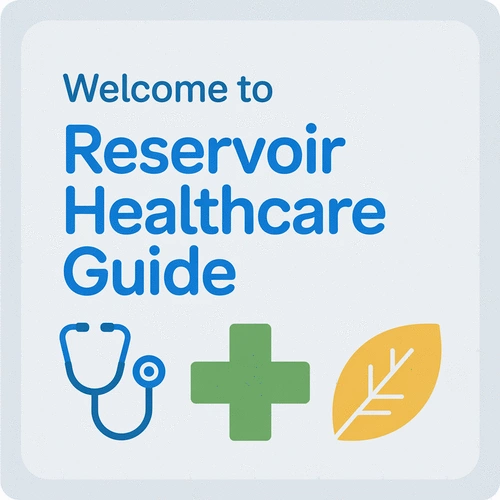Have you ever felt overwhelmed by the thought of recovering from surgery? Knowing what to expect can significantly ease your anxiety. Understanding your recovery journey is not just about healing; it's about empowering yourself with knowledge to navigate this crucial time.
What You Will Learn
- The concept of a reservoir in your body and its essential role in recovery.
- Key aspects of surgical recovery including the importance of rest, nutrition, and hydration.
- A timeline of what to expect during your recovery journey, from initial healing to follow-up care.
- Step-by-step instructions on how to properly care for your incision post-surgery.
- Signs of infection to watch for and when to seek medical help.
- Effective strategies for managing pain and discomfort during recovery.
Recovery Timeline and Incision Care Steps
Understanding your surgical recovery involves knowing the general timeline and key steps for incision care. We've outlined these processes visually below to help you prepare.
Recovery Timeline: What to Expect
- • Week 1: Initial healing; focus on rest & light activities.
- • Week 2-3: Gradual activity increase; light exercises.
- • Weeks 4-6: Significant improvement; follow-up with provider.
Step-by-Step Incision Care
- Wash hands thoroughly.
- Gently clean incision with mild soap & water.
- Pat dry with a clean towel.
- Apply prescribed ointments/dressings.
- Monitor for signs of infection.
Understanding Your Recovery Journey After Surgery
Recovering from surgery can be a daunting journey, but understanding the process can make it feel much more manageable. We often talk about the concept of a reservoir in the context of recovery—it's essentially a space in your body that collects or compensates for changes due to surgery. This might include managing fluids or healing tissues. Knowing about this can help you understand why certain care steps are necessary for a smoother recovery.
At Reservoir Healthcare Guide, we believe that being informed empowers patients and their families. Think of your recovery journey as a roadmap where knowing the important stops along the way ensures you reach your destination safely!
What is a Reservoir and Why is it Necessary?
A reservoir during recovery refers to the body’s ability to store and manage essential fluids and nutrients that aid healing. Think of it as a reservoir of support, where your body gathers what it needs to repair itself. This is crucial, especially after surgical procedures where tissues might be disrupted. Research, such as that published in the National Library of Medicine, highlights the importance of fluid management for successful post-operative outcomes.
- Fluid Management: It helps maintain hydration levels that are vital for recovery.
- Nutrient Storage: Your body needs certain nutrients to heal; this reservoir ensures they are available.
- Waste Removal: It aids in efficiently eliminating waste products from the healing tissues.
Understanding this concept can reduce anxiety about what happens post-surgery and highlight the importance of following care instructions. Remember, listening to your body during recovery is key!
Key Aspects of Surgical Recovery
Successful recovery involves several key aspects that you should keep in mind. Here are some vital elements to consider:
- Rest: Give your body the time it needs to heal.
- Nutrition: A healthy diet rich in vitamins and minerals supports recovery.
- Hydration: Staying well-hydrated is essential for tissue repair.
- Follow-Up Care: Regular check-ins with your healthcare provider are crucial to monitor your healing.
Many medical professionals advocate for Enhanced Recovery After Surgery (ERAS) protocols, which emphasize these multimodal aspects to optimize patient recovery and outcomes, as detailed by the ERAS Society. By focusing on these aspects, you can create a supportive environment that fosters healing. Don’t hesitate to reach out to us here at Reservoir Healthcare Guide if you have questions about managing these components!
Overview of the Recovery Timeline: What to Expect
While every individual’s recovery journey is unique, having a general timeline can help set expectations. Most patients can expect a recovery timeline that looks something like this:
- Week 1: Initial healing phase—focus on rest and light activities.
- Week 2-3: Gradual increase in activity; start incorporating light exercises as advised by your healthcare provider.
- Weeks 4-6: Most patients feel significantly better; follow up with your healthcare provider for assessments and guidance.
Anticipating these phases can ease worries and help you stay focused on your recovery goals. Remember, it's all about taking it one step at a time! If you're ever unsure, don’t hesitate to consult with our team at Reservoir Healthcare Guide—your health is our priority!
Pro Tip
To enhance your recovery, consider incorporating gentle mindfulness practices such as meditation or deep breathing exercises into your daily routine. These techniques can help reduce stress and promote a more peaceful healing environment, allowing your body to focus on recovery.
Caring for Your Reservoir After Surgery
After surgery, caring for your reservoir is an essential part of the healing process. This refers to the management of your surgical site, commonly known as an incision, which requires attention to detail to ensure proper recovery. As part of the Reservoir Healthcare Guide, I aim to empower you with practical information that can help you navigate this important phase.
Your recovery journey is unique, and understanding the best practices for incision care can significantly impact your healing. Below are some key steps to follow to ensure a smooth recovery.
Step-by-Step Instructions for Incision Care
Taking care of your incision doesn’t have to be overwhelming! Here’s a straightforward guide to help you:
- Wash your hands thoroughly before touching the incision site.
- Gently clean the incision with mild soap and water. Avoid scrubbing.
- Pat the area dry with a clean towel; do not rub.
- Apply any prescribed ointments or dressings as directed by your healthcare provider.
- Monitor for any signs of infection (see below).
Consistent care will not only help prevent complications but also promote faster healing. Remember, if you have any questions or concerns, don’t hesitate to reach out to our team at Reservoir Healthcare Guide!
Daily Cleaning and Maintenance Tips
Here are some quick tips to incorporate into your daily routine:
- Choose a specific time each day for your cleaning routine.
- Use a mirror to check your incision if it’s hard to see.
- Keep the area surrounding your incision clean and dry.
- Change your dressings according to your doctor’s instructions.
These practices will help maintain a healthy environment for your incision to heal effectively. Stay consistent with your care to ensure a successful recovery!
Recognizing Signs of Infection
While caring for your incision, it’s crucial to be aware of potential signs of infection, which can include:
- Increased redness or swelling around the incision site.
- Pus or unusual discharge.
- Fever or chills.
- Increased pain or tenderness at the site.
If you notice any of these symptoms, please contact your healthcare provider right away. Early intervention can make a significant difference!
Wound Care Essentials: Keeping Your Incision Healthy
Keeping your incision healthy is vital. Here are the essentials for effective wound care:
- Avoid soaking the incision in water until cleared by your doctor.
- Wear loose clothing to avoid irritation on the incision site.
- Keep an eye on your activity levels; excessive movement can stress the incision.
By following these essentials, you can help ensure your incision heals properly. If you have any questions about what to expect during your recovery, remember that you’re not alone—I'm here to help!
Managing Pain and Discomfort During Recovery
Experiencing pain and discomfort post-surgery is common, but managing it effectively is crucial for your recovery. Understanding your options will empower you to feel more in control of your healing process!
Understanding Pain Management Options
There are several strategies you can use to manage pain:
- Over-the-counter pain medications, like acetaminophen or ibuprofen.
- Prescription medications from your doctor, if needed.
- Ice packs can help reduce swelling and discomfort.
- Relaxation techniques such as deep breathing or meditation.
Using these strategies can help you find relief. However, it’s essential to follow any advice from your healthcare team regarding medications. The National Library of Medicine offers extensive resources on various pain management strategies for post-operative care.
When to Seek Help for Pain Issues
If your pain escalates or doesn’t improve with your management plan, it’s important to reach out to your doctor. Look out for:
- Severe pain that is not responding to medication.
- New or worsening symptoms, such as swelling or redness.
- Difficulty moving or engaging in daily activities.
Your comfort is a priority, and we’re here to support you in managing it effectively. Don’t hesitate to ask for help!
Utilizing Pain Assessment Tools for Effective Management
One of the best ways to manage pain is to know how to assess it! Here are some tools that can help:
- Pain scales, such as the numerical scale from 1 to 10.
- Visual aids that allow you to express your pain level visually.
- Journals to track your pain levels and any relief strategies that work for you.
Keeping a record of your pain can be helpful for discussions with your healthcare team. Remember, effective pain management is a crucial part of your recovery journey!
Frequently Asked Questions (FAQs)
- What is a "reservoir" in the context of surgical recovery?
In surgical recovery, a "reservoir" refers to your body's ability to store and manage essential fluids and nutrients, aiding in healing and waste removal after a procedure. It helps maintain the necessary balance for your body to repair itself. - How long does surgical recovery typically take?
While individual recovery times vary, a general timeline includes initial healing (Week 1), gradual activity increase (Weeks 2-3), and significant improvement with follow-up care (Weeks 4-6). Always follow your healthcare provider's specific guidance. - What are the most important aspects of surgical recovery?
Key aspects include adequate rest, proper nutrition rich in vitamins and minerals, consistent hydration, and regular follow-up care with your healthcare provider to monitor your healing progress. - What are the essential steps for caring for my incision?
Essential steps involve thorough handwashing before touching the incision, gentle cleaning with mild soap and water, patting dry with a clean towel, applying prescribed ointments/dressings, and vigilant monitoring for signs of infection. - What signs of infection should I watch out for?
Be alert for increased redness or swelling around the incision, pus or unusual discharge, fever or chills, and increased pain or tenderness at the incision site. Contact your healthcare provider immediately if you notice any of these symptoms. - How can I effectively manage pain during my recovery?
Pain can be managed through over-the-counter or prescription medications, applying ice packs, and utilizing relaxation techniques like deep breathing. It's crucial to follow your healthcare provider's advice on pain management and seek help if pain escalates or doesn't improve.
Recap of Key Points
Here is a quick recap of the important points discussed in the article:
- Understand Your Reservoir: Recognize the importance of your body's reservoir in managing fluids, nutrients, and waste during recovery.
- Key Aspects of Recovery: Prioritize rest, nutrition, hydration, and follow-up care to foster a supportive healing environment.
- Incision Care: Follow proper steps for incision care, including handwashing, gentle cleaning, and monitoring for signs of infection.
- Pain Management: Utilize various pain management strategies and tools to effectively address discomfort during recovery.
- Recognize Infection Signs: Be vigilant for symptoms such as increased redness, swelling, or unusual discharge from the incision site.










